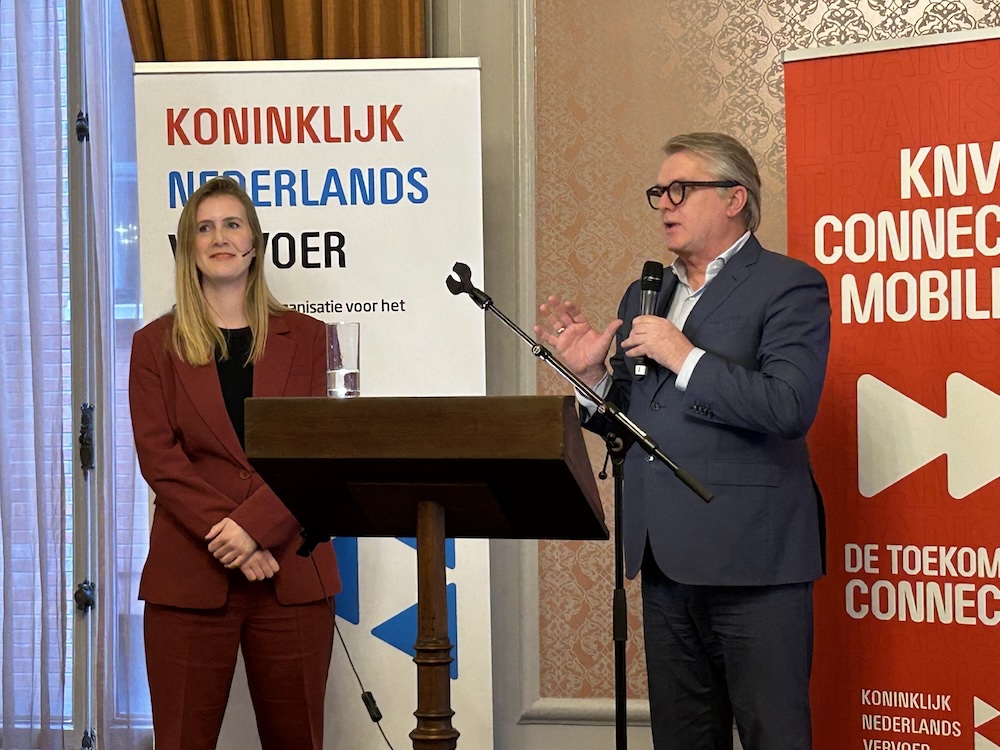KNV Connected Mobility plays a crucial role in the transition to a future of mobility that is both sustainable and technologically advanced, while also taking into account the needs and expectations of the modern traveler.
The annual New Year's reception of the Royal Dutch Transport Operators (KNV) at Sociëteit de Witte in The Hague, which took place on February 1, was an important occasion for professionals from the mobility sector. About 200 guests came together to network and discuss the future of transport in the Netherlands.
Bertho Eckhardt, chairman of KNV, emphasized in his speech the willingness of the transport sectors to contribute to the changes in the sector. However, he also pointed out the need for consistent government policies to support these changes. Eckhardt spoke out in favor of KNV Connected Mobility, an initiative that was launched four years ago with the Meuse Lab. This project aims to better coordinate various players in the transport sector, both new and old and both physical and digital.
“We have now reached the point where we also have a shared challenge within the association. Integrating transport is not easy,” said Eckhardt. He emphasized that all market parties, and especially travelers, can benefit from being more connected. This would make traveling simpler, more sustainable and easier. Eckhardt believes that the future of integrated transport is already underway, with many companies and agencies working on organizing demand-responsive transport.
An important aspect of KNV Connected Mobility is to provide a platform where innovation in transport can be scaled up. Eckhardt emphasized that this initiative allows parties not to have to lobby each individual municipality for the right regulations, but to work as a collective to inform national and European governments about the best ways to accelerate the transition in mobility. This offers opportunities to shape the future of mobility.

A special addition to the meeting was the presence of Melanie van der Horst, councilor of Amsterdam. Her speech provided insight into Amsterdam's vision on mobility and urban development, which is crucial for professionals from different sectors of the mobility industry.
The reception also provided an opportunity for networking. Arjan Vaandrager, leader of KNV Connected Mobility, was brought into conversation with Edwin van den Belt, a leading expert on the TOMP-API & CDS-M. This meeting was an important opportunity to bring networks and technology together in a sector where the idea of Mobility as a Service (MaaS) has been wrongly pushed into the background for some time.
initiative
KNV Connected Mobility, a new initiative of the Royal Dutch Carriers, is a groundbreaking step towards the development of a healthy ecosystem for digital mobility. With the interests of companies, travelers and society as a whole in mind, this association strives to promote modes of transport that are faster, easier, more efficient and cleaner.
This new entity serves as an advocate for all market parties that are or want to become active in the field of connected mobility. This includes a wide range of stakeholders, from traditional transport companies to new technology companies engaged in digital mobility solutions.
One of the core activities of KNV Connected Mobility is to focus on the joint interests of companies active in the connected mobility market. This includes critical areas such as changing laws and regulations, travel information, integrated ticketing and local regulations. Another important point of attention is coordinating efforts regarding data management, data exchange and compliance with privacy legislation.
In the coming years, KNV Connected Mobility will work closely with affiliated companies and government agencies to create and maintain a level playing field and a clear legal framework. This is essential for the development and implementation of new mobility services. In addition, the association will work to increase the earning capacity of its members. This will be done by promoting integrated transport solutions, allowing members to seize new market opportunities and promote innovation in the sector.




